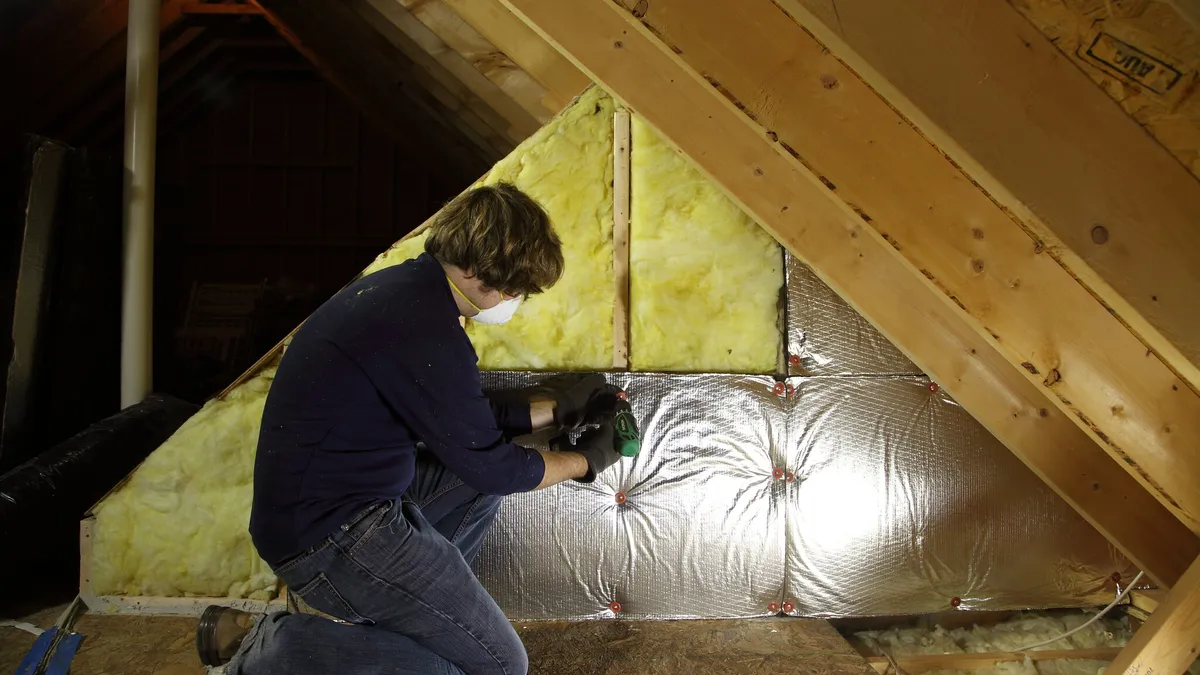Dive Brief:
- States should expand energy efficiency programs and demand side management resources, potentially using federal funding to make the investments, according to almost five dozen industry stakeholders in a Wednesday letter to several governors and other officials.
- Funds from the American Rescue Plan Act of 2021 and the bipartisan Infrastructure Investment and Jobs Act could be tapped, as well as any funds from future federal legislation or budget reconciliation, according to sustainability nonprofit Ceres, which helped to organize the letter.
- Congress has made funds available to improve public health and infrastructure, and "it's hard to imagine a better opportunity for meeting both goals than doubling down on energy efficiency," Ceres Senior Director of State Policy Alli Gold Roberts said in a statement.
Dive Insight:
The federal government has made billions of dollars available to weatherize homes and make buildings more efficient, part of the Biden administration's goal for the U.S. to be carbon neutral by 2050.
The 59 groups petitioning state officials this week say efficiency projects are "smart investments that support local family-wage jobs, save customers money, mitigate energy cost volatility, and help modernize buildings and facilities to prevent future crises."
Efficiency investments can be deployed quickly, the groups said in the letter, through existing programs "and can maximize value by leveraging collaborative public/private funding opportunities."
The letter was scheduled to be sent to officials in Arizona, California, Colorado, Illinois, Maryland, Michigan, Minnesota, New Hampshire, New Jersey, North Carolina, Oregon, Pennsylvania, Virginia, and Washington, according to Ceres.
Along with Ceres, the organizers of the letter include: the Building Performance Association, the California Energy Efficiency and Demand Management Council, the Energy Efficiency Business Coalition of Colorado, the Energy Efficiency Alliance of New Jersey, the Keystone Energy Efficiency Alliance, the National Association of Energy Service Companies, and the Virginia Energy Efficiency Council.
Companies signing the letter include Siemens, CMC Energy Services, Eaton, Sierra Nevada and AO Smith.
Buildings account for around 40% of global energy usage, a "figure that is projected to rise," Ryan Dalton, director of state policy and external affairs at SiemensUSA, said in a statement. "We have seen the benefits of more efficient buildings, and those benefits are even clearer now at a time of energy scarcity and volatile energy markets."
The groups and companies called for investments in improved building ventilation systems, to reduce waste and improve air quality, and demand-side energy management programs that serve residential and commercial customers.
Low-income energy efficiency programs should be expanded, they said, and job training programs can be developed to help grow the energy efficiency workforce.
There is more than $1 trillion in estimated maintenance and repair for public buildings, including hospitals, airports, universities, and schools, that has been deferred over time, according to the letter. The groups called for federal funds to be "leveraged alongside private investments, tax credit programs, loans, leases, and/or existing demand-side management programs to maximize impact."
“From manufacturing floors to downtown office towers to our own living rooms, buildings of all sorts are critical infrastructure that power states’ economies," said Ceres' Gold Roberts. "Programs that modernize buildings and equipment ... are good for business and good for the economy.”














